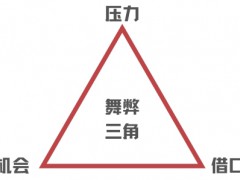据6月3日PV-magazine报道,虽然太阳能行业高管可能会被今年主要市场光伏投资预期所吸引,要知道,光伏行业投资预计将增长10%,但国际能源署(IEA)最新全球投资调查中更引人关注的点是关于全球油气巨头对未来的担忧情绪。
最新的年度报告显示,非国有化石燃料公司正在放弃新油气田的勘探,转而开发现有储量。随着英国石油(BP)、道达尔(Total)、壳牌(Shell)和埃尼(Eni)等公司承诺加大清洁能源支出,以安抚激进的投资者,加上新冠肺炎疫情加速了绿色能源市场的发展,石油和天然气巨头可能正在退出化石燃料行业。
IEA研究指出,中东地区的天然气储量将使该国的国有企业在短期内弥补过剩产能和市场份额,正如卡塔尔宣布的雄心勃勃的液化天然气投资计划所证明的那样。但即使在卡塔尔,能源转型的影响也得到了印证,因为开发新矿藏的计划伴随着对碳捕获、碳利用和封存碳的巨大投资承诺,IEA预测,在一年内,这项尚未得到证实的技术可能会发挥关键作用,这将为化石燃料巨头提供更多的适应时间。
谈到太阳能方面,IEA称,2020年,太阳能技术的进展被可再生能源——风能的间歇性进展所取代,尽管令人困惑的是,该报告称全球风能装机容量几乎翻了一番,达到114吉瓦,美国占15吉瓦。
IEA预计,今年光伏投资将超过风能投资,美国和欧洲的增幅将超过10%。这一预测让太阳能企业感到欣慰。
即使是在大规模太阳能项目撤出市场的情况下,小规模的太阳能安装项目也在增加,国际能源署指出,在越南,大规模激励计划的减少被小规模的屋顶太阳能项目所抵消,太阳能装机容量增加了9吉瓦。
报告估计今年的支出将增长近10%,至1.9万亿美元, 其中包括5300亿美元的新增发电产能投资,其中70%将用于清洁能源。IEA表示,去年创纪录的可持续债务和绿色债券发行水平意味着有大量现金可用于可再生能源,但没有足够的高质量项目或专用渠道来确保它转化为切实的落地项目设施,如太阳能面板或风能涡轮机。
2020年,电池储能投资增长近40%,至55亿美元,其中电网规模的设施增加了60%。该报告没有给出部署的新增容量的大小,但指出电池成本在2020年平均下降了20%。
在绿氢方面:去年的低碳氢支出也达到了创纪录的水平,报告称,有价值7000万美元的电解槽投入使用,虽然大多数电解槽至少在初期看来,仍将依靠电网供电。
电能和绿氢也占了新兴能源公司的风险投资的很大一部分,尤其是在美国和欧洲。IEA报告称,越来越谨慎的机构投资者们正开始在其投资组合中增加此类创新企业,这可能是化石燃料行业未来不景气的又一个影响因素。
王佳晶 摘译自 PV-magazine
原文如下:
Are oil and gas companies on the run?
While solar industry executives are likely to be drawn to estimates such as an anticipated 10% rise in PV investment in key markets this year, the more headline-grabbing content of the International Energy Agency‘s latest global investment survey may concern the world's oil and gas majors.
The latest edition of the annual report cites figures which demonstrate non-state-owned fossil fuel companies are pulling away from exploration in favor of exploiting their existing reserves. With companies such as BP, Total, Shell and Eni pledging to ramp up clean energy spending to placate activist investors, market developments accelerated by the Covid-19 pandemic appear to point to the fact the oil and gas majors could be on the retreat from fossil fuels.
The International Energy Agency (IEA) study notes the reserves held in the Middle East will enable state-owned players there to pick up the slack – and market share – in the short term, as demonstrated by ambitious liquefied natural gas investment plans announced by Qatar. Even in Qatar, though, the effects of the energy transition are acknowledged by the fact plans to develop new deposits have been accompanied by a big commitment to invest in carbon capture, use and storage, in a year the IEA predicts could be pivotal for the as-yet unproven technology, which would offer fossil fuel majors more time to adapt.
Back on the solar beat, the IEA document said the technology was eclipsed by the progress of rival intermittent renewable power source wind last year, although, confusingly, the numbers don't stack up where the report states global wind capacity almost doubled to 114 GW, led by more than 15 GW in the U.S. pv magazine has asked the IEA about the apparent discrepancy.
Solar companies can take solace from the IEA's prediction PV spending will surpass wind investment this year, with a rise of more than 10% in the U.S. and Europe, following a year which saw new PV generation capacity deployment rise almost 25%, to nearly 135 GW.
Even in markets where large scale solar retreated, there was an uptick in small scale installations, with the IEA pointing to Vietnam, where the winding down of a large scale incentive program was counterbalanced by rooftop arrays – with 9 GW added.
With the report estimating total energy spending will rebound almost 10% to $1.9 trillion this year – including $530 billion for new generation capacity of which 70% will be devoted to clean power – the IEA said record levels of sustainable debt and green bond issuance last year mean there is plenty of cash available for renewables, but not enough high-quality projects or dedicated channels to ensure it translates into panels – or turbines – on the ground.
The document reported battery storage investment rose almost 40% last year, to $5.5 billion, with grid scale facilities accounting for a 60% rise. The report did not give a megawatt-hour volume for the new capacities deployed, but did note battery costs fell an average 20% during 2020.
Green hydrogen
Low-carbon hydrogen spending also hit record levels last year with the report stating $70 million worth of electrolyzers came online although the majority of them will “run on grid electricity, at least initially.”
Storage and green hydrogen also accounted for a healthy chunk of the venture capital funding which flowed into start-up energy companies, notably in the U.S. and Europe. The fact more cautious institutional investors are starting to have exposure to such innovative companies in their portfolios, according to the IEA report, could be another indicator of lean times ahead for the fossil fuel industry.
免责声明:本网转载自其它媒体的文章,目的在于弘扬石化精神,传递更多石化信息,并不代表本网赞同其观点和对其真实性负责,在此我们谨向原作者和原媒体致以敬意。如果您认为本站文章侵犯了您的版权,请与我们联系,我们将第一时间删除。







